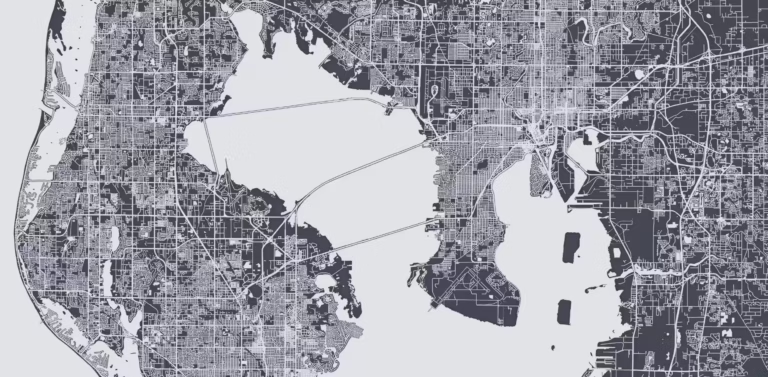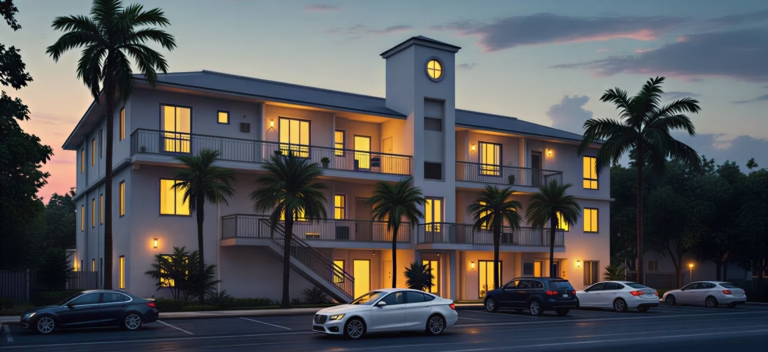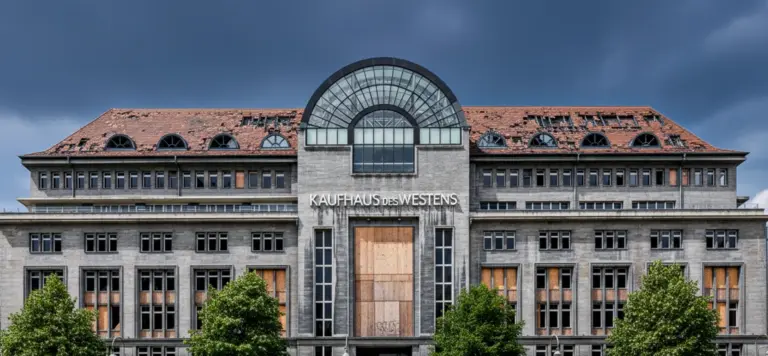A Market Full of Headlines – But Not on the Brink of Collapse
2025 is a year that forces investors to differentiate again: between movement and foundation. Interest rates remain high, capital remains selective – and yet a remarkable calm emerges in one sub-market. While many segments of the U.S. commercial real estate market are under valuation pressure, the residential sector, especially multifamily, is holding its course.
In the American understanding, Commercial Real Estate includes not only office or retail space, but also residential properties with more than four units. This is exactly where the strength of an asset class becomes evident, one that is driven not by headlines, but by demographics, demand, and affordability.
The media talks of “volatility,” “reset,” and “downward wave.” Yes – there are challenges. But the crucial point often goes unnoticed: Multifamily remains robust.
According to the Cap Rate Observer from Green Street (July 2025), capitalization rates for average multifamily properties have remained practically unchanged since the beginning of the year – a strong signal of fundamental strength in an environment of high interest rates, fluctuating capital flows, and ongoing price discovery.
Macro: Money Is More Expensive – But Predictable Again
Since mid-2024, the Fed Funds Rate has been stable between 5.25 and 5.5 percent, with inflation approaching 3 percent. Capital is not cheap, but calculable. For investors, this means: less betting on interest rates, more structure.
Yield is not created through movement, but through discipline – through financing, operations, and location logic that work even at 5 percent interest.
The real shift is not between boom and crisis, but between passive waiting and active structuring. Those who optimize financing now, modernize portfolios, and focus on stable micro-markets will emerge stronger from this phase.
Cap Rates as a Compass Between Risk and Yield
Cap Rates are ultimately the compass between risk and yield. They show how investors evaluate the sustainability of a property. Rising Cap Rates mean falling values – and vice versa. The fact that Cap Rates in the multifamily sector have remained largely stable since the beginning of the year is no coincidence, but an expression of confidence.
The majority of institutional and private investors continue to believe in the operational strength of this asset class. While in other asset classes the gap between price and yield has widened significantly, multifamily remains grounded: demand constant, operating costs calculable, financing still available.

Office Real Estate: When Structure Becomes More Important Than Location
In contrast, the U.S. office market is facing a structural shift. Home office, flexible work models, and cost pressure have disrupted old balances. Older buildings in markets like New York, San Francisco, or Los Angeles are losing attractiveness rapidly – and thus value. The result is Cap Rates sometimes in the double digits and price declines the market hasn’t seen in decades.
- New York City: An office building at 366 Madison Avenue in Midtown was sold in September 2025 with a loss of about 60 percent. The former owner, an international investor, realized a massive discount – a process representative of the market.
- San Francisco: An office property at 800 Market Street recently changed hands with a similar 60 percent price discount. The vacancy rate there is now over 30 percent – many high-rises are effectively empty.
- Los Angeles: In Downtown L.A., properties like the EY Plaza Tower, the 777 Tower, and the Gas Company Tower have recorded value losses of 60 to 70 percent. One California Plaza fell from 459 million USD to 121 million USD – a drop of almost 75 percent.
These numbers show: Office real estate in many U.S. markets is no longer dealing with cyclical weakness, but with a structural change. The world of work has changed – permanently.
Other Segments – Similar Messages
Pressure prevails in other submarkets as well.
- Self-Storage: After years of boom, valuations have fallen by about 20 percent since 2022. Cause: Oversupply in secondary markets, declining margins, and rising operating costs. According to the Self-Storage Market Trends Report H1 2024, major operators reported negative “Same-Store-Revenue-Growth” rates for the first time: Public Storage – 0.6 %, Extra Space Storage – 0.4 %, CubeSmart – 1.6 %. Parallel, costs for insurance and property tax rose disproportionately – another factor putting NOI margins under pressure.
- Retail: Retail is also feeling pressure, but remains a micro-location topic. In San Francisco, the San Francisco Centre (formerly Westfield Mall) lost about 75 percent of its market value between 2016 and 2023. The owners surrendered the property to creditors in 2023 – a symbol of market cleanup.
Multifamily as a Stability Anchor
In this background, multifamily acts almost as a counterweight to the nervousness of other segments. Valuations are about 20 percent below the high, but the curve is flattening. In the large Sunbelt metros, occupancy rates are rising, the financing environment is easing, and tenant revenues are stabilizing.
These data mark no crisis, but a healthy market phase: prices rationalized, expectations adjusted, yields real. In short: Correction yes – collapse no. Multifamily remains the part of the Commercial-Real-Estate market that is carried not by speculation, but by ongoing results.
What Does This Mean for Investors?
Those who focus on stable cash flows with controllable risk should look closely. Multifamily remains one of the most reliable asset classes in 2025 – not because it is spectacular, but because it delivers calculable results in an environment of high interest rates. The core lies in the combination of solid financing conditions, robust demand, and rationalized valuations.
Financing Remains Possible, Predictable, Diversifiable
The times when cheap money covered every weakness are over. Today, only what has substance works. Agency financing around five percent creates predictable structures – provided the leverage ratio remains disciplined. Since Cap Rates at acquisition are usually above the financing costs, a positive leverage effect emerges again, enabling real additional yields.
Principles of Financing 2025:
- Fixed or Variable – But with Protection: Fixed terms secure calculability. Variable loans need caps, floors, or reserves to limit interest risks.
- DSCR in the Present: Calculations are based on the current NOI. Projected rent increases are an additional chance, not the basis for decisions.
- Loan-to-Value Conservative: 55–65 percent debt capital create stability and preserve room for maneuver.
- Refinancing as an Opportunity, Not a Necessity: Follow-up financing in two to three years can be advantageous, but it may not become a condition for success. Those who finance solidly today can renegotiate later in peace – not under pressure, but from strength.
- Existing Loans to Assume: In many cases, older loans with favorable interest rates of three to four percent can be assumed during purchase. These “old financings” can significantly improve the entry price and make transactions more attractive.
The new rule is: No yield without controllability. Capital discipline replaces leverage euphoria – a change that makes the market healthier.
Demand Remains Robust, Because Housing Is Not a Cycle

Housing is not a consumer good. It is not postponed when the economy weakens. In the USA, three forces overlap: population growth, housing shortage, and hindered home ownership. The number of households is increasing, the supply not at the same pace.
Mortgage interest rates make ownership unaffordable even for the middle class. Construction and insurance costs exacerbate the pressure.
- The average interest rate for 30-year mortgages remains around 6.3 to 7 percent in 2025, about double what it was three years ago.
- Even middle-class households with stable income struggle to afford the monthly burdens for a home ownership.
- The Housing Affordability Indexes in states like Florida, Texas, or Arizona show record lows; home ownership has rarely been so unaffordable.
The consequence: more and more people stay longer in the rental market. For investors, this is not a short-term interest effect, but a demographic long-term trend. Young professionals, families, and immigrants rent longer, change more frequently within the rental market, and thus secure a stable revenue base.
Changed Preferences
Tenants want flexibility today, not commitment. They seek proximity to workplaces, urban lifestyle, and predictable costs without maintenance risk. The classic single-family home is not losing appeal, but affordability – a shift that directly strengthens multifamily.

Regional Dynamics
In the large Sunbelt metros – Tampa, Dallas, Raleigh – this trend works doubly:
- Internal Migration: Influx from high-cost states like California, New York, Illinois.
- Company Relocations: Employers follow people; new jobs emerge where living is affordable.
- New Tenant Segments: Wage increases create demand in the mid-price segment – the ideal field for value-add investors.
Supply with Brakes
In the short term, some markets are reaching high completion numbers, but the pipeline is flattening sharply. Increased construction and financing costs are delaying or stopping projects. The current oversupply in sub-markets is likely to be absorbed in 2026. Even with moderately rising vacancy rates, the fundamentals remain strong. Declines affect mainly overpriced new constructions in saturated locations. In the mid-class segment, rents are already stabilizing – a sign of functioning market mechanics.
In short: Multifamily is the form of housing that adapts to life realities. Multifamily offers flexibility, liquidity, and predictability for tenants and investors. While ownership remains the exception, renting becomes normality – and that’s exactly what makes this asset class resilient.
Valuations Are Cleaned – Entries Reasonable Again
After two years of price pressure, the market has cleaned up significantly. The overheating of the boom years 2021 – 2022 is over, not because demand has collapsed, but because capital discipline has returned.
Cap Rates of three to four percent no longer reflected the actual risk of many properties – prices were too high, yields too tightly calculated. Today, entry Caps in stable Sunbelt markets are mostly between 5.25 and 5.75 percent, higher for value-add properties. This opens up a healthy spread between debt and equity costs again.
The market is distinguishing more clearly between high-quality existing properties (“Core”) and properties with development potential (“Value Add”). Institutional buyers are still paying premiums for prime locations; medium-sized operators have better chances with operationally influencable properties. The time of multiple expansion is over – yield is created again through work on the property, not through rising market prices.
Higher Initial Yields, Less Air in the Price
In the boom years, part of the valuation was pure future: rising rents, falling interest rates, unlimited capital supply. This air has escaped. Today, real numbers count.
For investors, this means:
- Cash-on-Cash Yields 5 – 7 percent are achievable again – without exaggerated assumptions.
- Cap Rate Expansions are largely priced in; downside limited.
- Exit Calculations become more conservative: mostly + 25 – 50 basis points compared to entry.
The environment rewards operational excellence again. Those who have CapEx, leasing, and cost management under control achieve value increase from operations – not from speculation.

Value-Add – Selective Instead of Cosmetic
The understanding of “Value-Add” has professionalized. Where every rent increase and every apartment building was considered a strategy before, today risk, payback, and feasibility count.
- Light to Medium Renovations: new floors, kitchens, baths, energy upgrades – sensible if amortization is realistic within two to three years.
- Complete Renovations: only if price discount and conservative financing compensate the risk.
- Operational Levers: digitization, professional management, ancillary cost optimization, targeted marketing – often faster and lower-risk effective than structural measures.
The guiding principle applies again: Fix the operations before fixing the walls.
Repricing Creates New Entry Opportunities
The U.S. real estate market has recalibrated. The time of reflexive price increases is over – and that’s good. Sellers accept that the valuation levels of 2021 won’t return. Buyers who bring capital, patience, and operational competence now enter a market where calculations are made – not speculated.
Especially in U.S. multifamily investments, entry opportunities arise that were unthinkable two years ago. This becomes particularly visible in three structures:
- Distressed Sales: Properties whose short-term bridge financing or interest hedges expire are traded at realistic prices. Those with liquidity can buy selectively here, without risk premium for panic.
- Recapitalizations: Operators and funds whose old investors exit open up for new equity partners. These situations offer entry points with clear operational data and reduced entry prices.
- Assumable Loans: Many old financings from 2020–2022 are fixed at three to four percent. Those who can assume these secure structurally higher leverage yields without additional risks.
According to Green Street, prices in the U.S. multifamily sector are currently about 20 percent below the peak. The curve is flattening – a sign of rationalized expectations. This means: The market is not in crisis, but in a healthy reevaluation.
It is the classic phase in which long-term thinking investors act: not in the boom, but in the transition from uncertainty to clarity. That is the definition of a rationalized market.
Psychology of Repricing – Why It Matters Now
Every real estate cycle has its transition phase – that moment when sellers still hope and buyers already calculate. Exactly in this tension field lie the smartest entry points.
Many market participants have become accustomed to rising prices in the years of cheap capital. But rising interest rates are not the end of the market, but the return to economic reality: Cash flow counts more than fantasy again, substance more than story.
The interest rate is a selection instrument again. It separates projects that were only carried by cheap money from those that function stably even at five percent financing. This creates space for investors who calculate – not bet.
Investable Normality
This market phase is not a setback, but a return to normality. Valuations reflect realistic risk today, Cap Rates move in rational ranges, and yields arise from actual value creation – not from momentum.
For long-term oriented investors, this means: 2025 is not a year of retreat, but of selective building. Those who invest in residential properties in Florida, Texas, or North Carolina today benefit from an environment where stability is rewarded again – not ridiculed.
The definition of attractiveness has shifted: Not who uses the highest leverage achieves the greatest success, but who combines patience and operational control. We are in an investable normality.

The Role of Multifamily in the Portfolio
Multifamily is not a speculative yield component, but the part of a portfolio that creates stability when capital markets fluctuate. In a world where inflation, interest decisions, and geopolitical uncertainty make yields volatile, ongoing tenant revenue is the calmest form of income.
The advantage of this asset class lies in the nature of the product: Housing is not a trend, but a need. It depends neither on technology cycles nor on industry dynamics. While office buildings, hotels, or special real estate depend on industry-specific trends, residential space remains a daily need.
Three structural strengths secure stability:
- Operational Cash Flow: The yield comes from rental income, not from value gains. Distributions arise from ongoing NOI, not from sales.
- Low Obsolescence: Apartments age physically, but not functionally – unlike offices or retail spaces.
- Steady Distributions: Even moderate rent adjustments generate stable, recurring yields. Many institutional investors use multifamily as a cash flow stabilizer in the overall portfolio.
Especially for family offices and institutional investors who rely on predictable cash flows, multifamily is the natural stability anchor. Multifamily delivers what stock and bond markets promise but rarely hold: continuity.
Inflation Protection Through Operational Cash Flow
The inflation protection of real estate is often explained theoretically. In multifamily, it is practically tangible. In the USA, lease agreements typically run twelve months – rent increases take effect almost in real time.
If inflation rises, yield grows with it. This is not magic, but market mechanics. If inflation rises by three percent, new contract rents increase within a year’s time accordingly – NOI follows, while fixed costs remain largely constant.
In addition, variable revenue sources: parking spaces, pets, additional services. These make multifamily one of the few asset classes where revenues directly react to price development – not to market mood.
Moreover, many measures for yield increase are CapEx-light: energy efficiency upgrades, modernization of kitchens and baths, or upgrading shared areas increase tenant satisfaction and payment willingness – without straining the balance sheet.
Thus, multifamily becomes an operational hedge against loss of purchasing power: Revenues grow with inflation, the tangible value basis remains, and the owner retains control over their result.
Diversification and Correlation – Stability as Strategy
In historical comparison, multifamily shows low correlation to stock and bond markets. This makes it a logical building block for portfolios that are too capital market-dependent today.
Even within the segment, targeted diversification is possible:
- Regional: A spread over Sunbelt metros like Tampa, Dallas, Raleigh, Atlanta, or Orlando reduces the risk of local fluctuations.
- Segment-Related: A mix of Core-Plus-, Value-Add-, and repositionable properties offers different revenue sources – ongoing cash flow meets selective growth, without disproportionately increasing risk.
- Financing-Related: Combination of fixed and variable loans smooths interest sensitivity.
The result: A portfolio that carries itself independent of market cycles. Multifamily acts like a beta correction in the overall portfolio – it reduces fluctuations, stabilizes distributions, and maintains the option for organic growth.
ESG and Responsibility
The sustainability aspect is increasingly becoming a yield factor. Energy efficiency, operational transparency, and social responsibility are no longer just moral issues, but criteria for refinancing, valuation, and exit.
Multifamily benefits doubly here: First, because energy intensity per unit is lower than in commercial spaces. Second, because socially compatible rental models are increasingly seen as risk buffers. ESG thus becomes not a burden, but a prerequisite for stable yields.
Why Stability Is Not Stagnation
In a world that confuses volatility with opportunities, consistency is an underestimated competitive advantage. Multifamily shows that calm is not weakness, but a strategy: yield from operations, not from speculation.
Financing is available, demand sustainable, valuations cleaned. This results in a market environment that rewards patient investors – not the loud, but the logical.
Correction yes – collapse no. The motto still holds. For long-term investors, now is the phase where quality becomes recognizable again – and affordable.
Conclusion – Stability as a New Form of Yield
Multifamily is the asset class that translates stability into yield. It combines ongoing revenues with real inflation protection and delivers diversification in an environment that remains restless on many fronts.
Those building a sustainable wealth portfolio need at least one asset class that delivers yields even in difficult market phases, preserves liquidity, and creates long-term real value growth. Not in promises, but in mechanics. And that’s exactly the foundation of every sustainable yield.
You don’t have to wait for the next boom to build wealth. Often, the best opportunities arise when headlines are loud, but markets have become rational.
When fundamentals are right, prices realistic, and capital acts with patience again – that’s when the smartest entry points emerge.









